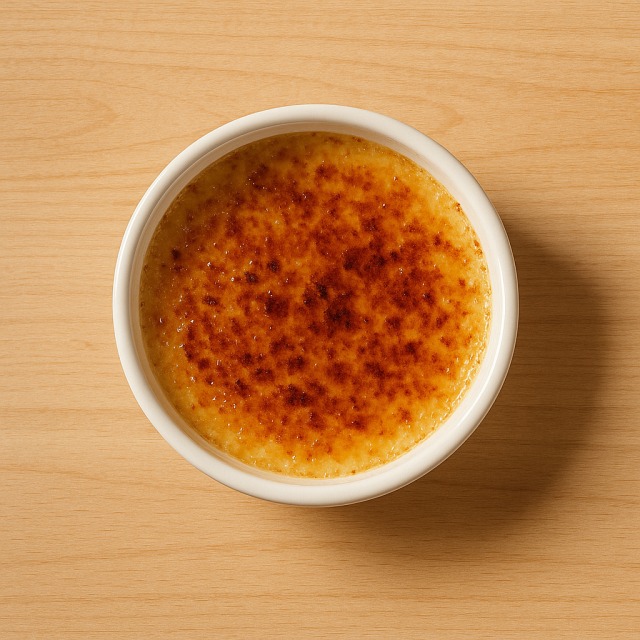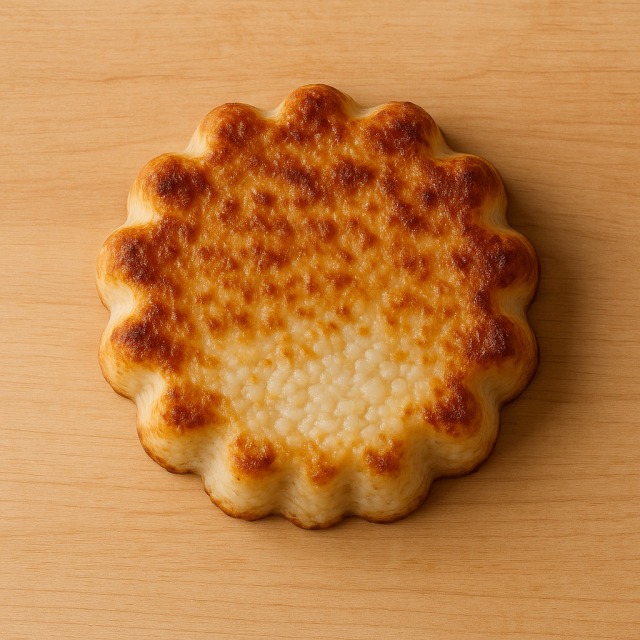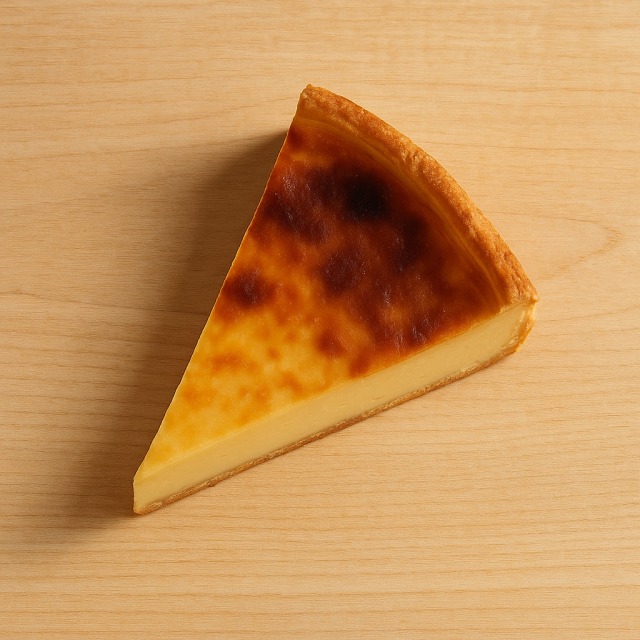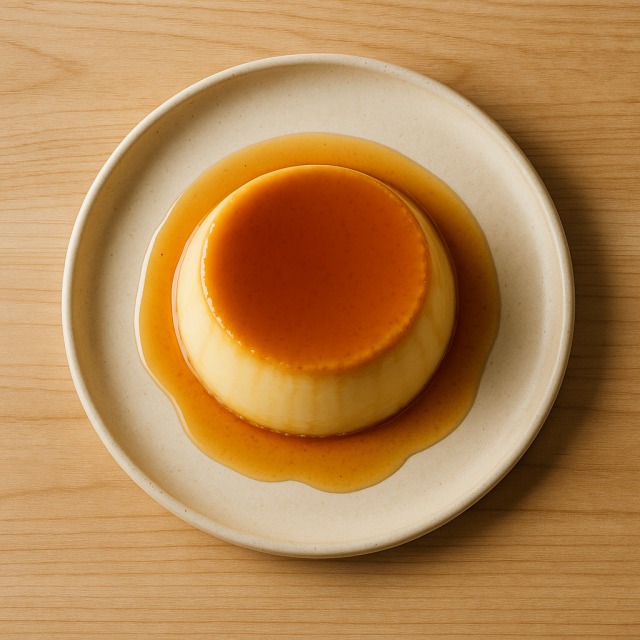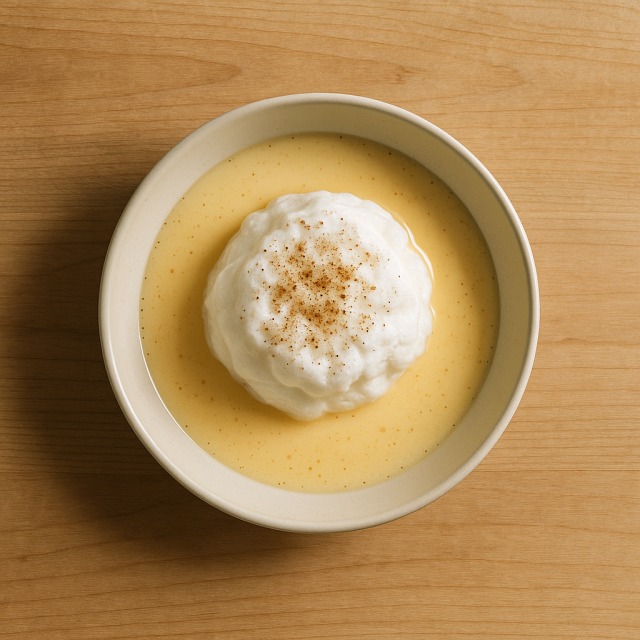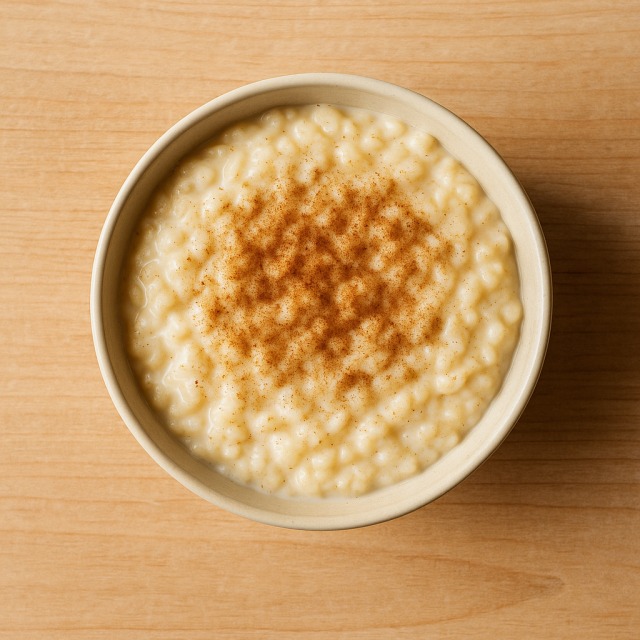Calorie Chart / Desserts / Pudding
How Many Calories Are in Pudding?
Calculation of the nutritional value & Recommended Dietary Intake of pudding
For g and a calorie requirement of kcal
| Calories 360 kcal | Proteins 13 g | Lipids 11 g | Carbohydrates 52 g |
| 18% | 17% | 16% | 19% |
Health benefits of pudding

Pudding - 100g
Calories 360 kcal
Proteins 13 g
Lipids 11 g
Carbohydrates 52 g
Pudding is a traditional dessert based on milk, eggs, and cereals, which makes it naturally rich in proteins and calcium while also delivering a good dose of energy-providing carbohydrates. Because it is a rather high-calorie option, those calories can be useful for people who have increased energy needs, such as athletes after an intensive workout or individuals trying to regain weight.
Thanks to the milk content, pudding supplies vitamin B2 (riboflavin) and vitamin B12, essential for red-blood-cell formation and nervous-system health. The eggs bring vitamin A and choline, nutrients involved in vision and cognitive functions. These assets come in a matrix that is pleasant to digest, so even sensitive stomachs can benefit without adding excessive calories from fat.
On the mineral side, pudding contributes phosphorus—key for bones—and selenium, an antioxidant trace element. When prepared with cocoa or vanilla, additional polyphenols or vanilloids add supposed antioxidant potential, although this benefit is still considered "supposed" by current research. Historically, British sailors carried dried pudding mixes on long voyages precisely because the calories stayed stable over time and the dessert could be rehydrated quickly.
In short, pudding is a delicious, high-calorie treat that delivers more than empty calories: it offers a meaningful spectrum of vitamins, minerals, and proteins that can fit into a balanced diet when portions are controlled.
Tips for incorporating pudding into a balanced diet
Because pudding is dense in calories, the first piece of advice is portion control: aim for 100 g instead of a large bowl to keep calories in check. To lighten the recipe without sacrificing creaminess, swap whole milk for skimmed milk and replace part of the sugar with mashed banana; this tweak reduces calories while adding fibre and potassium.
For a balanced post-workout snack, layer chilled pudding with fresh raspberry coulis and a spoonful of toasted almond slivers. The proteins repair muscle, the fruit adds antioxidants, and the nuts offer healthy lipids, so the calories become nutritionally strategic rather than empty.
If the goal is weight maintenance, serve a modest ramekin of pudding after a lean main course, such as grilled salmon with steamed broccoli. The overall plate stays reasonable in calories yet feels indulgent. Conversely, endurance athletes needing extra calories can fold cooked rice into the mixture to create a comforting rice-pudding hybrid that boosts carbohydrates.
Finally, remember temperature: enjoying pudding well chilled tends to slow down eating speed, giving your brain time to register calories and satiety cues more effectively.
Frequently Asked Questions
- How many calories are in pudding?
- There are 360 kcal per 100 g.
- Is pudding higher in calories than ice cream?
- Portion for portion, pudding delivers slightly fewer calories than premium ice cream but more calories than a light sorbet. Always compare labels to know the exact calorie load.
- Does making pudding at home lower the calories?
- Yes, using semi-skimmed milk, reducing sugar, and adding fruit purée can cut up to 25 % of the original calories while keeping texture.
- What nutrients come with those calories?
- Besides calories, pudding offers proteins from eggs, calcium and vitamin B12 from milk, and small amounts of selenium and phosphorus.
- How can I burn the calories from one serving of pudding?
- Roughly 30 minutes of brisk walking, 20 minutes of cycling, or a short HIIT session will offset the 360 kcal, turning the calories into useful energy rather than stored fat.
Similar foods
Information provided by Calorie Menu may contain inaccuracies or errors. It cannot, under any circumstances, substitute medical advice or medication.
